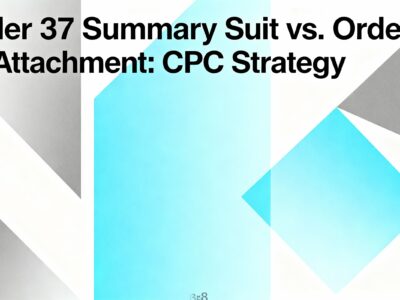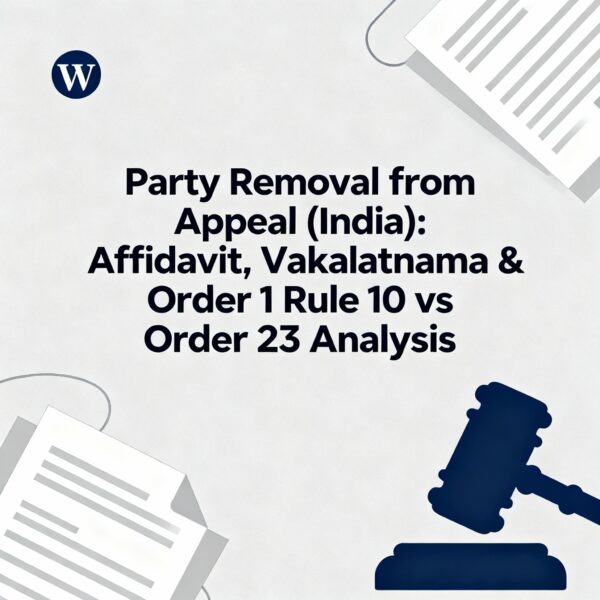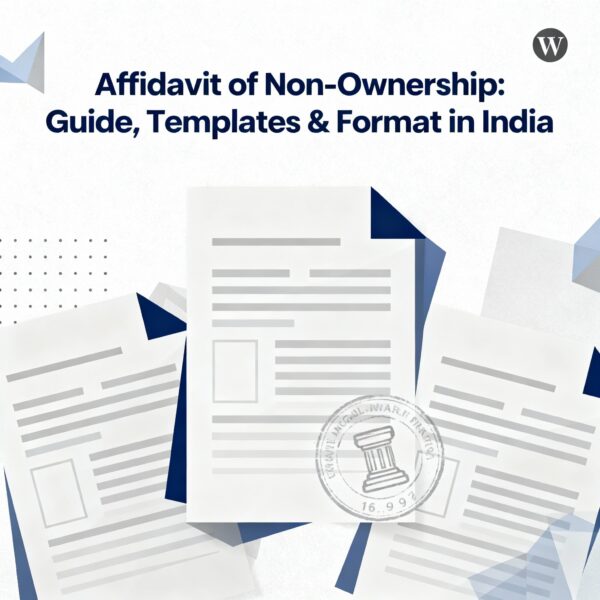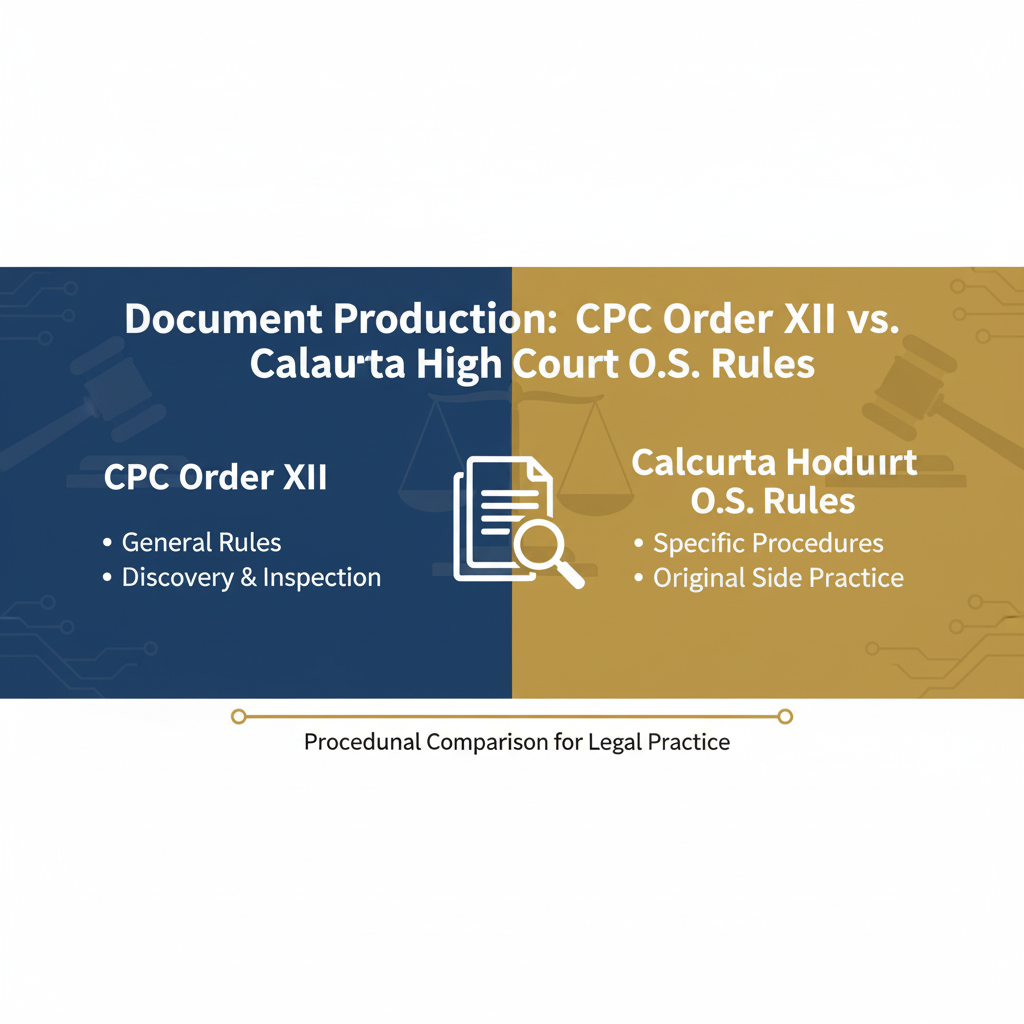Affidavit in Indian Family Court: Guide to (Drafting, Samples & Law)
The petitioner’s affidavit is the cornerstone of any case in an Indian Family Court. Whether for divorce, maintenance, or child custody, this sworn statement is not a mere formality—it is your primary evidence, the foundation upon which your entire case is built. A well-drafted affidavit can make your case compelling and credible, while a poorly constructed one can be dismissed as “a piece of waste paper.”
This comprehensive 2025 guide provides an exhaustive breakdown of the entire process, from understanding the legal framework under the Code of Civil Procedure and Evidence Act to mastering the art of strategic drafting. We delve into the mandatory financial disclosures mandated by Rajnesh v. Neha, provide multi-lingual sample templates, and cover advanced topics like presenting digital evidence and the severe consequences of filing a false affidavit.
The Petitioner's Affidavit in Indian Family Courts
A Comprehensive Legal and Drafting Manual for Modern Practice
Last Updated: October 17, 2025
Table of Contents
Part I: Legal Architecture
Part II: Family Law Context
Part III: Drafting Guide
Part IV: Practical Application
Part V & VI: Templates
Part VII: Advanced Procedures
Part VIII: Modern Evidence
Part IX: FAQ
Part I: The Legal Architecture of Affidavits in India
An affidavit is the bedrock of written evidence in Indian courts. Its proper drafting is not a mere formality but fundamental to legal integrity. This section deconstructs the legal framework governing affidavits.
1.1 Foundational Jurisprudence: The Affidavit as Sworn Testimony
An affidavit is a voluntary, written declaration of facts, confirmed by oath or affirmation. It transforms a simple statement into a solemn testimony, holding the deponent accountable for its truthfulness under penalty of perjury.
Essential Features of a Valid Affidavit
1.2 The Code of Civil Procedure, 1908 (Order XIX)
Order XIX of the CPC is the procedural backbone for using affidavits in civil litigation. It balances efficiency with the fundamental right to challenge evidence through cross-examination.
1.3 The Evidentiary Conundrum: The Indian Evidence Act, 1872
A key legal nuance exists: Section 3 of the Evidence Act explicitly excludes affidavits from the definition of "evidence". So, how does an affidavit become evidence? Through a specific court order.
The Path to Admissibility
Part II: The Affidavit in the Specialized Context of Family Law
Family Courts prioritize conciliation and speed, giving affidavits an amplified role. The rigid rules of evidence are relaxed to help judges effectively resolve sensitive disputes.
2.1 The Family Courts Act, 1984: A Paradigm Shift
Section 14 of this Act empowers Family Courts to receive any information that may assist it, even if it's not strictly admissible under the Evidence Act. This makes the affidavit a primary vehicle for placing a wide array of information before the court.
2.2 The Supreme Court's Directive: Rajnesh v. Neha
To combat the concealment of income in maintenance cases, the Supreme Court made it **mandatory** for both parties to file a comprehensive Affidavit of Disclosure of Assets and Liabilities. This has revolutionized maintenance litigation in India.
Breakdown of the Mandatory Financial Affidavit
Part III: The Anatomy of a Petitioner's Affidavit: A Drafting Guide
A well-drafted affidavit is clear, precise, and legally compliant. This section provides a practical, step-by-step guide to constructing an effective affidavit.
3.1 Structuring the Affidavit
Every affidavit follows a standard structure: Court Name, Case Number, Memo of Parties, Title, Deponent's Introduction, Body in numbered paragraphs, Verification, and Jurat. Accuracy in these formal sections is paramount.
3.2 Essential Averments for Different Petitions
A generic affidavit is insufficient. It must be tailored to the specific legal requirements of the case. Use the filter below to see the essential sworn statements required for different types of family law petitions.
| Petition Type | Essential Averments | Purpose |
|---|---|---|
| Divorce (Contested) | "That the petition is not presented in collusion with the Respondent." | Satisfies statutory bar against collusive divorce (Sec. 23(1)(c) HMA). |
| Divorce (Contested) | "That the Petitioner has not been accessory to, connived at, or condoned the act(s)." | Satisfies bars under Sec. 23(1)(b) of HMA. |
| Divorce (Mutual Consent) | "That my consent has been given out of my own free will..." | Establishes voluntariness of consent, the cornerstone of mutual consent divorce. |
| Maintenance | Statements on petitioner's inability to maintain herself and respondent's capacity to pay. | Establishes foundational requirements for claiming maintenance. |
| Maintenance | Filing of the mandatory Affidavit of Assets and Liabilities as per *Rajnesh v. Neha*. | Complies with the Supreme Court's directive for full financial disclosure. |
| Child Custody | Statements detailing ability to provide for child's physical, emotional, and educational well-being. | Addresses the "paramount welfare of the child" principle. |
3.3 The Verification Clause & Jurat
The verification is the deponent's solemn declaration certifying the truthfulness of the statements. An improperly verified affidavit can be treated as "a piece of waste paper." It must clearly distinguish between facts based on personal knowledge and those based on belief.
Part IV: Practical Application and Advanced Considerations
Beyond structure, an effective affidavit requires strategic thinking and meticulous attention to detail. This section delves into advanced topics for creating a persuasive and legally sound document.
4.1 Mastering the Affidavit of Assets and Liabilities
The guiding principle for the *Rajnesh v. Neha* affidavit is absolute transparency. Any attempt to conceal assets or understate income can lead to severe consequences, including perjury and contempt of court proceedings. Full and frank disclosure, supported by documentary evidence, is non-negotiable.
4.2 Evidence-in-Chief by Affidavit
In modern Family Court practice, the examination-in-chief is often filed as an affidavit. This document replaces direct oral testimony and forms the entire basis of the petitioner's case. It must be a complete, chronological narrative of the case, substantiating every allegation in the petition with factual detail.
4.3 The Role of Affidavits in Interlocutory/Interim Applications
Family law cases often involve numerous interim applications for urgent relief, such as temporary maintenance, child custody, or injunctions against transferring property. In these applications, the court's decision is almost entirely based on the affidavits filed by both parties. A well-pleaded, fact-intensive, and evidence-backed affidavit is crucial for securing temporary relief and can significantly influence the final outcome of the case.
4.4 Strategic Drafting & Common Mistakes to Avoid
The most effective affidavits construct a coherent and persuasive narrative. The goal is to guide the judge through the facts, building credibility and making a compelling argument for the relief sought.
Drafting Best Practices & Common Mistakes
Best Practices
- Be Factual, Not Emotional: State what happened, not how you felt. Let the facts speak.
- Use Chronological Order: A clear timeline is easy for the court to follow and understand.
- Use Annexures Effectively: Refer to and attach supporting documents like reports, photos, or emails.
Common Mistakes to Avoid
- Hearsay: Avoid statements like "My sister told me that..." as they are generally inadmissible.
- Vague Allegations: "He always harassed me" is a weak statement. Provide specific incidents.
- Improper Verification: Failing to distinguish between knowledge and belief in the verification clause is a fatal error.
Part V: Sample Legal Format
This section provides a practical template based on the provided legal document. It's an affidavit for producing a document at a later stage in a proceeding, along with a request to condone the delay. Annotations explain each component.
5.1 Affidavit for Production of Documents
Part VI: Multi-lingual Legal Template
To enhance accessibility, here is the sample affidavit format in multiple Indian languages. Use the tabs below to switch between English, Hindi, Bengali, Marathi, Tamil, and Telugu versions of the template.
Part VII: Advanced Procedural Aspects
Understanding the procedural formalities and potential pitfalls is as crucial as drafting the content. This section covers the vital role of the attesting authority and the serious consequences of making false statements.
7.1 The Role of the Oath Commissioner or Notary
The attestation by an Oath Commissioner, Notary Public, or other authorized magistrate is what gives an affidavit its legal sanctity. This is not a mere rubber-stamp exercise. The officer has a legal duty to perform.
The Attestation Process: Step-by-Step
- Identity Verification: The officer must verify the identity of the deponent, often through a government-issued ID or identification by their advocate.
- Understanding the Contents: The officer must ensure the deponent has read and understood the contents of the affidavit. If the deponent is illiterate, the contents must be read out and explained to them.
- Administering the Oath: The deponent must sign the affidavit in the presence of the officer after taking an oath or making a solemn affirmation that the contents are true.
- Official Seal and Signature: The officer completes the Jurat ("Sworn before me") with their signature, date, place, and official seal. An affidavit without a proper Jurat is invalid.
7.2 Legal Consequences of a False Affidavit
Filing a false affidavit is a grave offense with severe penalties under Indian law. The court can take action on its own (suo motu) or upon an application by the opposing party.
Warning: Filing a False Affidavit is a Criminal Offense
Offense: Perjury (Section 191, IPC)
Knowingly making a false statement under oath.
Punishment (Section 193, IPC)
Imprisonment for up to 7 years and a fine.
Offense: False Declaration (Section 199, IPC)
Making a false statement in a declaration that a court is bound to receive as evidence.
Additional Action
The court can also initiate proceedings for Contempt of Court.
Part VIII: Modern Evidentiary Challenges
In the digital age, much of the evidence in family law disputes comes from electronic sources. This section explains how to correctly present digital evidence through an affidavit.
8.1 Affidavits Supporting Digital Evidence (Section 65B Certificate)
To prove electronic records like WhatsApp chats, emails, or call recordings, a simple printout is not enough. The Indian Evidence Act, 1872, mandates that such evidence must be accompanied by a certificate under Section 65B. This certificate is often filed in the form of an affidavit.
Key Averments for a Section 65B Affidavit
- Identify the Device: The affidavit must state the details of the computer or device from which the electronic record was produced.
- Lawful Control: It must confirm that the device was in the lawful control of the person providing the certificate.
- Regular Use: It should state that the information was regularly fed into the computer in the ordinary course of activities.
- Proper Functioning: The affidavit must aver that the computer was operating properly during the period the data was created.
- Authenticity: It must confirm that the printout or copy is a true and accurate reproduction of the original electronic record.
Pro Tip: File the Section 65B affidavit along with the electronic evidence itself to avoid admissibility challenges later.
Part IX: Frequently Asked Questions (FAQ)
Who can be a deponent and file an affidavit?
Any person who is legally competent to make a statement and has knowledge of the facts of the case can be a deponent. This is usually the petitioner or respondent themselves. In certain cases, a close family member with direct knowledge of the facts can also file a supporting affidavit.
Can I make corrections to an affidavit after it has been signed?
No, you cannot alter an affidavit after it has been sworn and signed. If a mistake is discovered, the correct procedure is to file a fresh, supplementary affidavit clearly stating the correction and explaining why the error occurred in the original document.
What is the difference between an affidavit and a pleading (petition)?
A pleading (like a divorce petition) is a formal document that sets out a party's claims or defenses. An affidavit is a sworn statement of fact used to support the claims made in the pleading. In many family law matters, the law requires the petition to be supported by an affidavit, essentially making the petitioner swear to the truth of their claims.
Does filing an affidavit mean I don't have to appear in court?
Not necessarily. While an affidavit can serve as your "Evidence-in-Chief," the opposing party has the right to cross-examine you on the statements you've made. Therefore, you will likely still be required to appear in court for cross-examination on the date fixed by the judge.









